Review: Microsoft Lumia 950
Dec 16, 2015, 2:00 PM by Eric M. Zeman

Microsoft's first Windows 10 Mobile handset, the Lumia 950, is here at last. This device boasts a beautiful screen and powerful camera, and includes unique features such as iris recognition biometrics and the ability to act as a full, desktop computer. Learn more about the Lumia 950 in Phone Scoop's in-depth report.
Hardware
Is It Your Type?
The Lumia 950 is the first Windows 10 Mobile device to ship from a U.S. carrier. For Microsoft devotees, there's a lot to like, thanks to the wholly refreshed operating system and compatibility across the Microsoft ecosystem. What's more, optional accessories allow the 950 to behave as a full Windows desktop PC. The phone isn't quite on par with competing flagships, however, and the hardware is somewhat disappointing. The 950 should be reserved for early adopters and those invested in Microsoft's platform and services.
Body
The 2013-era Lumia 1520 was the last true flagship to come from Microsoft's (nee, Nokia's) handset team. It was an over-sized phablet with excellent build quality, top-notch specs, and swift performance. Fast forward two years, and the Lumia 950 and its bigger brother, the 950 XL, don't quite fill the 1520's big shoes.

Microsoft scaled back the flashy colors and nixed the idea of a one-piece polycarbonate shell when approaching the Lumia 950. The phone is offered only in black or white, rather than yellow, cyan, or green, and it has a removable rear cover. It has a rather direct appearance; the slab shape is simple and free of busy design language. The 950 looks more professional and less party-goer, more buttoned-down and less bump-n-grind. It clearly stems from Nokia / Microsoft's older Lumia designs, but does so with less personality.
With a 5.2-inch screen, the 950 is a fairly big phone. It's thick, but thankfully not too heavy. The side edges are angled slightly, and the rear surface is mostly flat except where it curves slightly to meet the sides. Chrome accents give the matte surfaces a much-needed visual boost. A number of simple Lumia phones have hit store shelves in the past, but the 950 is severely lacking in sex appeal.
While no one likes carrying around a brick, the 950 borders on too light. The combination of light weight and these specific materials lends a cheap feeling to the hardware. I don't care for it very much, especially when you consider the phone's price point. The rear shell comes across as flimsy. Most people won't have trouble holding and using it, except for those with the smallest hands. I wish it were thinner. I can't think of a single Windows handset that was impressively thin, and the 950 does nothing to change that. The phone should fit into most pockets without issue, but I was often aware of its position in my pocket.
The 950's face is a plain, glossy affair. The chrome Microsoft logo is the only design element breaking up the stark, black panel. A slit in the top of the glass allows the earpiece speaker to project sound, and you'll notice a tiny, round hole in the glass below the screen that holds the microphone. The display's glass has its own frame that forms a protective rim. The rim feels rather sharp against your palm. There are no front buttons, physical or otherwise, as the 950 relies on software controls.
Microsoft carried over the side button configuration that graces many older Lumias. The 950 has dedicated camera button, screen lock button, and volume toggle all positioned on the right edge. All three buttons have sharp profiles that help them stand out from the side itself. The chrome coloring makes them easy to see. I think the buttons feel a bit cheap, but the action and feedback is quite good. I wish either the screen lock button or volume toggle — which are right next to one another — had some texture to make them easier to tell apart. I often turned the screen off by accident when I intended to lower the volume.
The 950 uses a Type-C USB port, which is located on the bottom edge. This is significant. The Type-C port is reversible, which makes it much easier to use; no more futzing about trying to figure out which way to insert it. It is fast, can send power in both directions, and represents the future of phone charging/data transfer. For now, however, accessories are limited. The phone comes with one Type-C cable. You may want to buy extra cables and/or adapters. The stereo headphone jack is on top. There are no controls on the left edge.
The camera module dominates the rear shell from a visual standpoint. It is encircled in a large, chrome rim that's about the size of a quarter. It's slightly raised, so the phone sits on a small angle when on a flat surface. The dual flash is positioned just off to the left of the lens and a small grille to the right protects the speakerphone. Chrome Windows and AT&T logos adorn the rear cover, as well.
The rear shell, which also forms the side edges, peels off quite easily. Underneath you'll find a removeable battery, memory card slot, and SIM card slot. Memory cards can be swapped without pulling the battery, but you have to take out the battery to change SIM cards.
The Lumia 950 is a fine handset, but it's far from the quality I want in a flagship phone. It suffices from a hardware perspective, but that's not saying much.
Screen
The 950's display measures 5.2 inches across the diagonal and boasts quad HD (2560 by 1440) resolution. You can't ask for a more pixel-rich handset in today's market. The pixel density is simply off the charts. The resolution will knock your socks off. You need a microscope to find individual pixels. It is an OLED panel, so brightness, contrast, and color are boosted quite a bit. Viewing angles are impressive. It's a great screen.
Signal
The Lumia 950 is sold by AT&T and runs on that LTE network. I tested the phone in and around New York City and found it to perform on par with other AT&T handsets. The phone was always able to make calls, even in poor coverage areas, and it never dropped or missed any calls while I tested it. Data speeds were generally good, but not the fastest I've seen. When surfing via LTE, web pages load quickly, but apps felt a bit slow to download to me. Even so, the Lumia 950 performed well enough.
Sound
Phone calls placed via the 950 sounded average to my ears. Clarity was generally good, and it suffered from only occasional bouts of distortion. When cranked up all the way, the 950 produces enough sound through the earpiece to overcome moderate background noise. You can hear conversations when walking around the mall or sipping a latte in a busy coffee shop, but noisy city streets tended to drown it out. The speakerphone sounded fairly muddy. It produces plenty of volume, but clarity suffers. I had a hard time understanding callers when using the speakerphone in the car. It will suffice for use in quiet spaces, but not loud ones. Everyone I called via the 950 said I sounded very good to them.
The ringers and alerts can be set loud enough to get your attention most of the time, but I didn't hear the phone several times when I was in my basement and the phone was upstairs in the front hall. The vibrate alert is barely adequate.
Battery
Battery life was inconsistent, which I can only blame on buggy software. The phone typically lasted from breakfast to mid-evening. It often petered out a bit before bedtime, which means you might need to carry a charger or battery pack when you'll be out of the house for the entire day. Several times the 950 lost a 50% charge overnight and was dead in the morning, which shouldn't happen. On the other hand, it sometimes ended the day with plenty of power to spare. The 3,000 mAh should be enough to get through a day, and the 950 showed me that it could do just that on a few occasions. Your mileage will probably vary a bit until Microsoft is done optimizing the Windows 10 code.
The device has a modest battery saver tool, and it can help coax more life from the battery if needed. It does the basics, such as turn down the screen's brightness, reduce alerts, and dial back the processor. If you get nervous about your battery mid-afternoon, putting the 950 in battery saver mode will ensure you get through the rest of the day.
The 950 supports rapid charging, which is helpful. The phone could go from 0% charge to 100% in just over two hours with a QuickCharge 2.0 charger. Alternately, you can drop the phone on a wireless charging pad to power it up.
Bluetooth, GPS, NFC, WiFi
The 950's radios mostly performed as they should. The Bluetooth radio, in particular, is easy to manage thanks to the Gadgets application, which seeks out accessories and makes for easy pairing. The NFC radio does its part, too, and can assist in making the connection with Bluetooth devices.
Calls made via Bluetooth headsets were acceptable, but just barely. Calls sounded pretty rough when passed through my car's hands-free system. I was pleased with the quality of music streamed to my favorite pair of headphones.
WiFi worked wonderfully.
The Maps app, which is excellent, interacted with the GPS radio without issue. The 950 located me in under 5 seconds most of the time, and was accurate to within about 20 feet. The app easily lets you navigate between points via car, transit, or foot, and real-time traffic reports can dynamically re-route you to avoid pesky delays.
Software
Lock Screen
The Lumia 950 runs Windows 10, which we reviewed in depth here. If you want to learn all there is to know about the new platform from Microsoft, I suggest you give it a read.
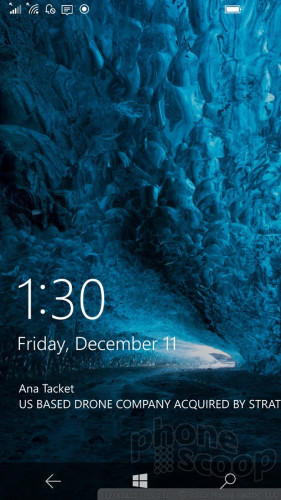
The Windows 10 lock screen is very useful and I like it. It always displays the time and date in large, white text on the black background. Microsoft calls this feature the Glance screen. It means you don't have to touch the phone to check the time. You can add certain types of notifications to the lock screen if you wish. I have the 950 set to show the most recent email in my inbox, but you can have it display the most recent text message, next calendar appointment, missed calls, and so on. With email selected, I can see who sent the last message and the subject line.
A quick press of the screen lock button will wake the screen. The time and notifications remain in place, but you'll see your background wallpaper, the status bar at the top, and several other notifications (simple badge counts) at the bottom of the screen. You can choose whether or not the Action Center is accessible from this screen. The Action Center opens up access to certain controls and more in-depth notifications.
The Lumia 950 does not have a fingerprint sensor, so you need to use a standard PIN or password to secure it.
Or, you can get all high-tech and use your iris to unlock the phone. The 950 has iris-recognition software for biometric security. It takes several moments to train the sensors to read your iris, and once it does the phone will automatically unlock if it recognizes your eyes. The retina scanner doesn't work if you have glasses, but I was able to use it with contact lenses. It works, but it's not very speedy.
Home Screens
The behavior of the Windows 10 Start screen is almost identical to that of Windows 8.1. You can arrange the Live Tiles into three columns, and the tiles are available in small, medium, and large sizes. Many of the Live Tiles update automatically with content and notifications, while others are just app icons. Users have control over how transparent the tiles are, which lets you see more or less of the background wallpaper you've picked. The Start screen can be infinitely long, and supports folders, too.
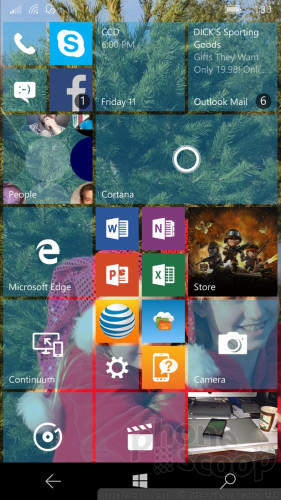
The full app menu is still a long list of apps sorted alphabetically. If you have a bazillion apps, using the search bar at the top is the quickest way to find what you want.
Notably, the system settings have been completely overhauled in Windows 10 and are much more user friendly. The settings are broken down into fewer groups and each group clearly spells out what controls are tools are within. I like the new fonts and colors here, as well.
You can make all the typical adjustments to the phone, such as wallpapers, colors, themes, ringers and alert sounds, and so on. It's all fairly easy to digest.
As far as performance is concerned, the Lumia 950 is a bit buggy. Though Windows 10 Mobile has been “released” officially, Microsoft is still pushing out updates to most core apps on the phone to improve stability. It's not overly buggy, but it is enough that you'll notice. Apps crash every so often, or pause a bit. In this case, I blame the software and not the six-core Snapdragon 808 processor and 3GB of RAM. The phone could/should be performing faster, and hopefully will over time.
Camera
A quick press of the dedicated physical camera button launches the Lumia Camera application in a jiffy. The app itself is largely carried over from older Lumia handsets. Microsoft changed the fonts and reorganized the UI a tiny bit, but it otherwise offers the same basic toolset and functionality that are available to other Windows Phones.
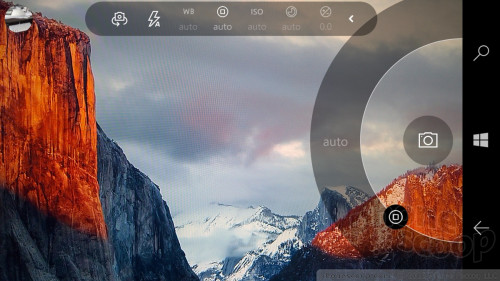
The camera user interface is cinch to use thanks to its plain arrangement. A small strip of options lets you switch to the front camera, turn on the flash, or turn on Rich Capture Mode. (This mode purports to do a better job of getting accurate exposure, focus, and color.) The app also includes full manual controls. You can manage white balance, exposure, ISO, brightness, and focus all on your own. For knowledgeable users, the manual tools can lead to much more creative results.
The camera includes several Lenses, which are software add-ons for the camera. One of those pre-installed is Lumia Selfie. If you want to snag the best-possible self portrait, this mode gives you the tools to get it done right. It includes a timer and some quick editing tools, such as cropping and mirroring, so you can make adjustments before sharing to social networks.
Swiping your finger up zooms in and swiping down zooms out. You can press the screen to lock in focus, but you have to use the shutter button to capture images. I like that there are separate software buttons for video and pictures, which makes it possible to snap still photos while recording video. You can also customize the behavior of the physical camera button to record video, fire a burst, or simply capture a picture.
This is a fine camera app. It performs well and offers a solid set of tools for creative imaging.
Photos
The 950 has a 20-megapixel sensor and can capture images in a variety of resolutions and aspect ratios. You have to select the 4:3 aspect ratio to access the full 20-megapixel count, as the 16:9 aspect ratio is cropped to 16 megapixels. Of note, the Lumia Camera can capture RAW images at 8 megapixels side-by-side with standard JPEGs. RAW images offer more post-production options with respect to editing and manipulation. You can't access the RAW files directly on the phone itself, but you can export them and tweak them in Photoshop.
The 950's camera is quite good. I was pleased with the majority of images taken in bright and low light. Focus is sharp, and exposure and white balance are accurate. I have absolutely no complaints about the camera, which goes toe-to-toe with the iPhone 6s, Galaxy S6, and V10.
Most people will be able to use the 950 as their main camera. The same is true when shooting video.
The 950 can capture up to 4K (UHD) resolution, but you'll probably be best served by sticking to 1080p. The footage I captured looked great, with excellent focus, color, and exposure.
The 5-megapixel selfie cam does a solid job, too. Results show a bit more grain, but that's fairly typical for a front-facing camera. You can always touch up your selfies with the Lumia Creative Studio app, which offers advanced editing tools.
If Microsoft got one feature right with the Lumia 950, it's the camera.
AT&T / Microsoft Stuff
AT&T kept the bloatware to a minimum. There are only 11 AT&T-branded apps preinstalled on the Lumia 950. They are the usual assortment of services, such as Address Book, Family Map, Locker, Navigator, Ready2Go, and YellowPages. Thankfully, you can delete them if you wish.
Microsoft's Office productivity suite is on board, and includes Word, Excel, PowerPoint, OneNote, and OneDrive. The apps have been fully revised for Windows 10 and are excellent for making quick edits or creating new documents. OneDrive automatically syncs everything so your files are accessible from anywhere. The utility of these apps cannot be understated. They're fantastic. The same goes for Outlook, and the Edge browser.
The 950's biggest trick is Continuum, which is the ability to plug into a desktop monitor or HDTV and have the phone act like a full Windows PC. Continuum requires a lot of little gadgets (cables, more cables, keyboard, mouse, TV, etc.) but does deliver what it promises. You can use the 950 like a regular computer where you'll have access to all your apps, files, and other content. The Continuum kit, sadly, costs an extra $99.
Wrap-Up
I gotta admit it, I'm a bit disappointed with the Lumia 950. I know Microsoft could have made a better phone. It distinctly feels like Microsoft cut corners in creating this handset and purposely gimped it with a boring, non-descript design and cheap materials. There's plenty to like, but the overall value is not compelling. For a $600 smartphone, I expected a whole lot more from the Lumia 950.
The screen is the phone's best feature, as far as the hardware is concerned. It's simply beautiful. The signal, call, and battery performance all land in the middle of the bell curve. The Lumia 950 is a bit buggy, but that should improve over time. The camera competes with the best of today's flagships. The 950's best feature — Continuum — pushes the price to a whopping $700.
I genuinely like Windows 10 Mobile and think it's the best mobile operating system to come from Microsoft. Even with universal apps helping pad the Microsoft Store, however, the Lumia 950 doesn't have nearly the selection of apps available that competing phones do.
Microsoft needs a hero handset to convince consumers that Windows 10 is a worthy investment. The Lumia 950 is not that device.
I'd only recommend this phone to Windows die-hards.
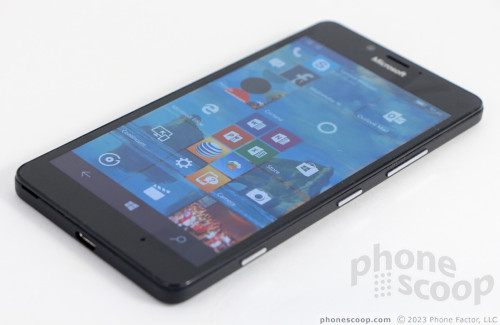
Comments
Not just for Windows die-hards
I disagree that it is only suitable for Windows fans, I think it is entirely suitable for anyone who wants a solid, productive mobile device that isn't rabid about, or totally dedicated to, either the Apple or Google camps - anyone who wants a good, solid phone that works, one built with productivity in mind, rather than making a fashion/social statement or strivin...
(continues)

















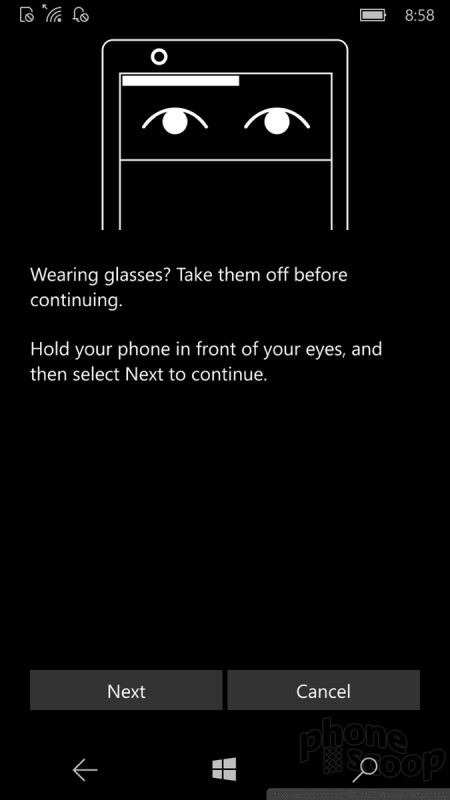





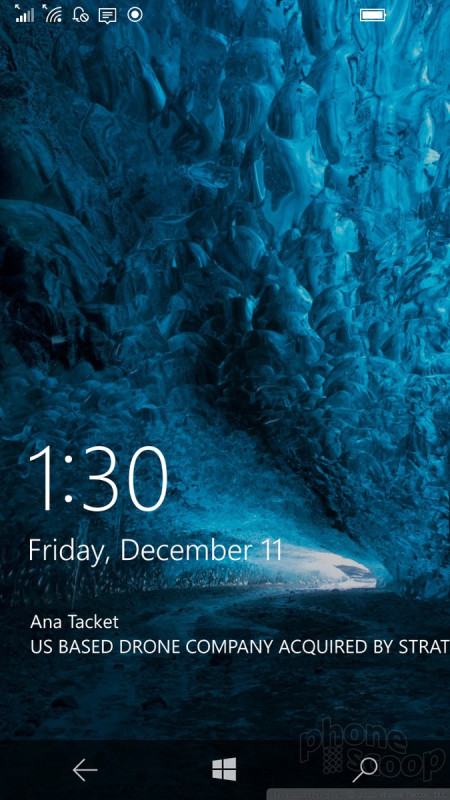








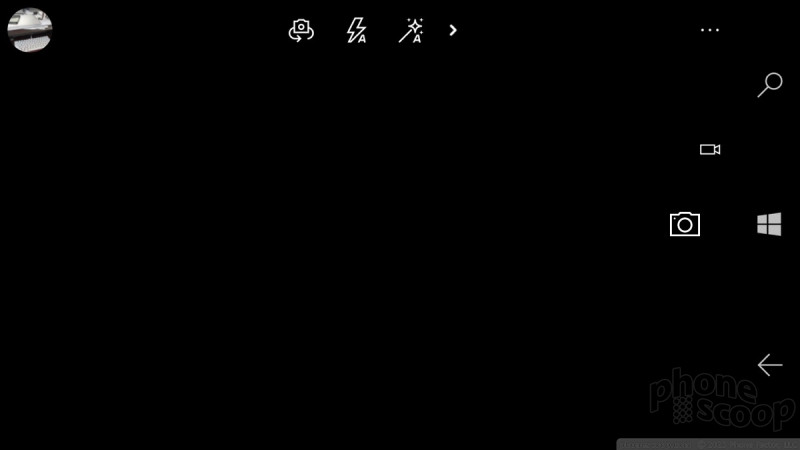





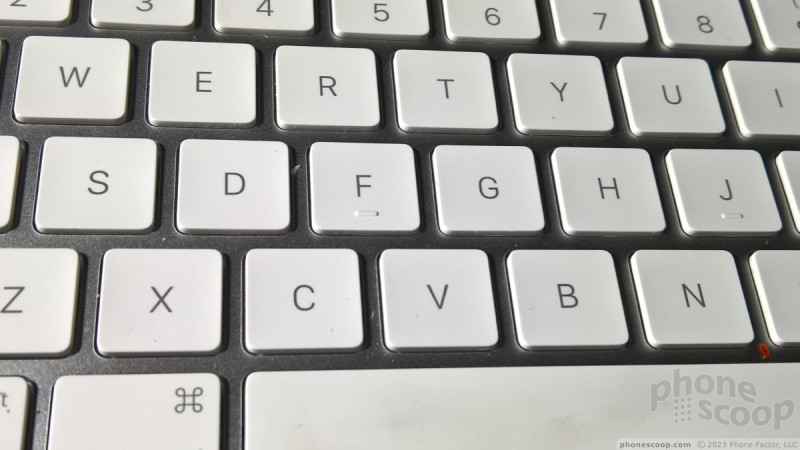
















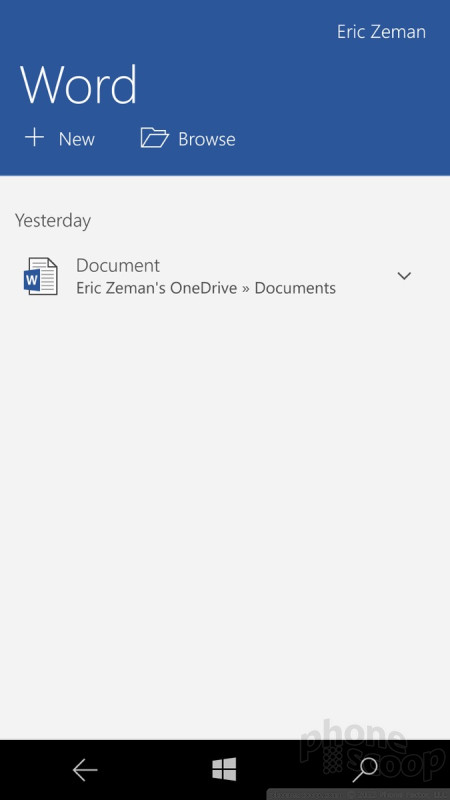






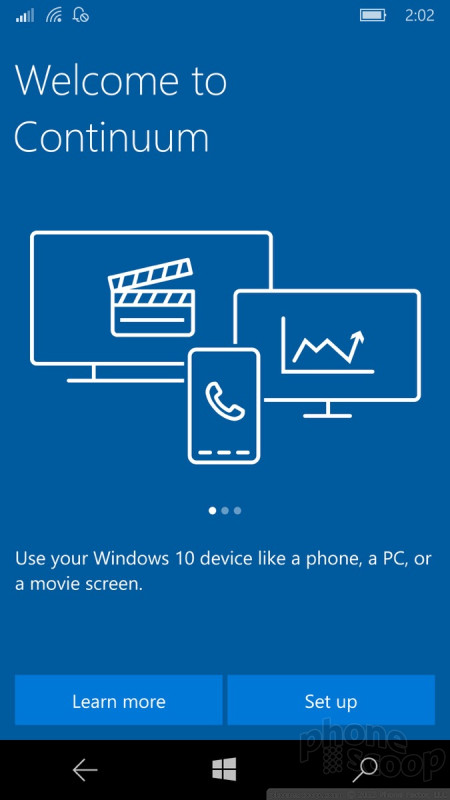




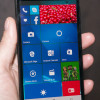 Hands on with the Lumia 950 and XL
Hands on with the Lumia 950 and XL
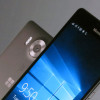 Lumia 950 is Microsoft's Flagship Windows 10 Phone
Lumia 950 is Microsoft's Flagship Windows 10 Phone
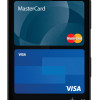 Microsoft Wallet Gains Tap-to-Pay Functionality
Microsoft Wallet Gains Tap-to-Pay Functionality
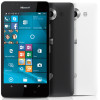 Microsoft's Lumia 950 Hits AT&T Stores November 20
Microsoft's Lumia 950 Hits AT&T Stores November 20
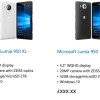 Microsoft Slips Up, Posts Lumia 950 and 950XL to Web Site
Microsoft Slips Up, Posts Lumia 950 and 950XL to Web Site
 Microsoft Lumia 950
Microsoft Lumia 950



